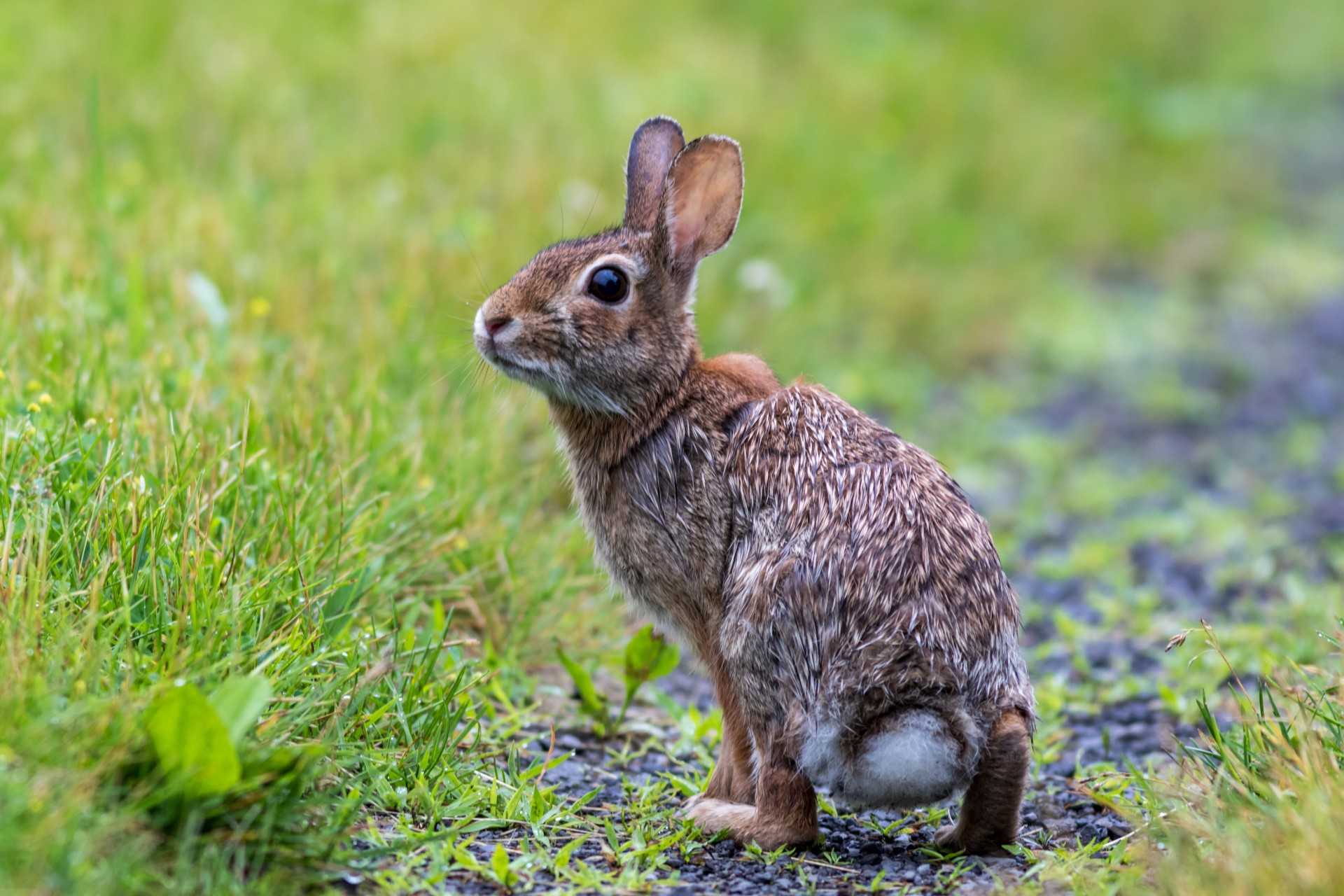SARS-CoV-2
The impact of SARS-CoV-2 on wild animals is currently unknown. There is evidence that SARS-CoV-2 has been transmitted from infected humans to some animals (anthropozoonosis or reverse zoonosis) including: domestic cats, tigers, lions, ferrets, mink, and domestic dogs. Currently there is no evidence that SARS-CoV-2 can be transmitted back to humans (zoonosis) from these species although it is very likely that COVID-19 (the disease cause by SARS-CoV-2) is zoonotic in origin. Transmission of SARS-CoV-2 is most common through respiratory secretions but the virus can also be found in saliva, urine, and feces.
SARS-CoV-2 is most closely related to a coronavirus isolated from Asian bats so there is particular concern that our North American bats might also be susceptible to infection. Additionally, there have been several mink farms in the Netherlands where SARS-CoV-2 is believed to been transmitted to mink from keepers with COVID-19 infections which raises concern about our native mustelids (mink, weasels, fisher, otter, and possibly skunks or raccoons). Until more information becomes available it is important that we mitigate any potential for SARS-CoV-2 to be transmitted to wildlife rehabilitation animals from wildlife rehabilitators with symptomatic or asymptomatic cases of COVID-19.
Guidelines to mitigate SARS-CoV-2 exposure to distressed wildlife under care:
- Follow all recommended social distancing guidelines in all aspects of your life, it is important to protect yourself, others and the animals in your care.
- Monitor your health and staff/volunteer health, people with signs of COVID-19 infection should not have contact with rehabilitation animals.
- Have a contingency plan in case you or staff/volunteer become ill.
- Avoid direct contact with the general public when they are delivering distressed wildlife. Have them make an appointment and do not let them get out of their vehicle at your facility. History and other accession information can be submitted via email or over the phone.
- Limit the number of staff/volunteers on each shift.
- Good biosecurity practices are vital. Keep animals separate, clean work surfaces and caging daily, have soaps, sanitizers, and disinfectants readily available.
- Limit the contact time between caretakers and rehabilitation animals, coordinate treatments and feeding to limit contact time.
- Use personal protective equipment (PPE) to limit the exposure of rehabilitation animals to caretaker’s respiratory secretions or saliva. PPE should include designated clothing or coveralls to be worn during rehabilitation activities that can be washed in hot water regularly, a surgical or fabric face mask and/or a plastic face shield (N-95 respirators are not recommended) and latex gloves that are changed between each animal. If gloves are not available hand cleaning with soap and water or an 80% alcohol hand cleaner between each animal is highly recommended.
- Be vigilant for signs of SARS-CoV-2 infection which may be respiratory distress, lethargy, fever, and/or diarrhea.
Unfortunately, wildlife testing for SARS-CoV-2 is not routinely available and would need approval by the State Veterinarian.
Rabbit Hemorrhagic Disease Virus 2
Rabbit Hemorrhagic Disease Virus 2 (RHDV2) is one of a group of calciviruses that infect rabbits, they are highly contagious and can have a high mortality rate in both domestic and wild rabbits. These viruses spread between live rabbits or contact with contaminated materials, RHDV2 can persist in rabbit carcasses, feces, urine, blood, litter and on fur and clothing for extended periods of time over wide temperature ranges. There were isolated cases of RHDV2 in domestic rabbits in Pennsylvania and Ohio in 2018, cases in domestic and wild rabbits in British Columbia and Washington State in 2018- 2020, an isolated case in domestic rabbits in New York City in 2019, and cases in domestic and wild rabbits in New Mexico, Arizona, Texas, Colorado, and wild rabbits in California in 2020. According to USDA-APHIS analyses the outbreak in the southwest is a different strain than the outbreak in the Pacific northwest and New York which suggests at least two separate introductions. Experiments have shown that our eastern cottontail (Sylvilagus floridanus) is susceptible to infection and mortality . We are very concerned that RHDV2 will spread to NY (likely through the movement of domestic rabbits and parts or contaminated food) and infect our wild eastern and New England cottontail rabbits.
Once RHDV2 gets into our wild rabbit populations it will be very difficult to manage or eliminate. RHDV2 can spread very quickly through populations taking less than 2 years to spread across Australia to all states and territories in 2015-2016 (https://jvi.asm.org/content/92/2/e01374-17 ).
Disease onset in individual rabbits is rapid, signs may include fever, lethargy, seizures, blood from the mouth or nose. Although RHDV2 is not known to infect people or pets, other rabbit diseases like tularemia are zoonotic so protect yourself from exposure when handling sick or dead rabbits by using latex gloves and avoiding aerosols. We are asking you to keep an eye out for reports of multiple sick or dead rabbits and to refrain from rehabilitating wild rabbits if you keep or accept domestic rabbits. RHDV2 can be spread by handling infected rabbits then later handling uninfected rabbits. RHDV2 is resistant to many common disinfectants, freshly prepared 10% household bleach solution is probably the most readily available. Please report unusual rabbit mortalities to your DEC Regional wildlife staff or the Wildlife Health Unit (518-478-3034).
For more information on RHDV2, please visit the US Fish and Wildlife Services Conservation Science Webinar Series.
June 3, 2020: Rabbit Hemorrhagic Disease Virus 2: An Emerging Threat to North American Wild Rabbits
Updated 6/8/20



